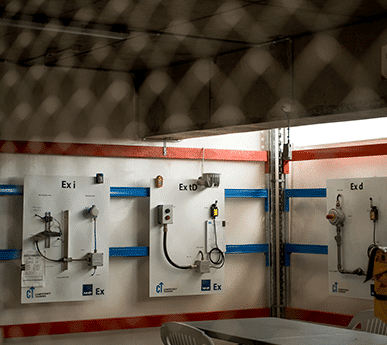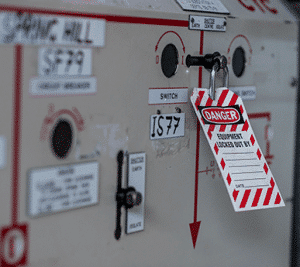7 Simple Techniques For Roar Solutions
7 Simple Techniques For Roar Solutions
Blog Article
The Best Strategy To Use For Roar Solutions
Table of ContentsThe Ultimate Guide To Roar SolutionsHow Roar Solutions can Save You Time, Stress, and Money.The Basic Principles Of Roar Solutions
In such an ambience a fire or surge is feasible when three basic conditions are met. This is frequently described as the "dangerous location" or "burning" triangle. In order to safeguard setups from a potential surge an approach of analysing and classifying a potentially hazardous location is required. The function of this is to make certain the appropriate choice and installation of devices to inevitably stop an explosion and to ensure safety of life.
(https://profiles.delphiforums.com/n/pfx/profile.aspx?webtag=dfpprofile000&userId=1891249800)
No devices must be set up where the surface temperature of the devices is more than the ignition temperature level of the offered risk. Below are some common dirt dangerous and their minimum ignition temperature. Coal Dust 380C 225C Polythene 420C (melts) Methyl Cellulose 420C 320C Starch 460C 435C Flour 490C 340C Sugar 490C 460C Grain Dirt 510C 300C Phenolic Resin 530C > 450C Aluminium 590C > 450C PVC 700C > 450C Soot 810C 570C The probability of the hazard existing in a concentration high sufficient to create an ignition will vary from location to place.
In order to categorize this threat an installment is divided right into locations of risk depending upon the quantity of time the harmful exists. These areas are described as Areas. For gases and vapours and dirts and fibres there are three areas. Area 0 Zone 20 An unsafe environment is highly likely to be existing and may be present for lengthy durations of time (> 1000 hours each year) and even continuously Zone 1 Zone 21 A hazardous atmosphere is possible yet not likely to be present for extended periods of time (> 10 450 C [842 F] A classification of T6 suggests the minimum ignition temperature level is > 85 C [185 F] Harmful area electrical equipment perhaps designed for usage in higher ambient temperature levels. This would certainly showed on the rating plate e.g. EExe II C T3 Ta + 60C( This implies at 60C ambient T3 will not be surpassed) T1 T1, T2, T3, T4, T5, T6 T2 T2, T3, T4, T5, T6 T3 T3, T4, T5, T6 T4 T4, T5, T6 T5 T5, T6 T6 T6 A T Course ranking of T1 implies the optimum surface temperature level generated by the instrument at 40 C is 450 C. Presuming the linked T Class and Temperature level ranking for the tools are appropriate for the location, you can always utilize a tool with a more rigid Department score than required for the area. There isn't a clear solution to this concern however. It really does depend upon the sort of tools and what repair work need to be performed. Devices with certain examination procedures that can't be done in the field in order to achieve/maintain third party ranking. Must come back to the factory if it is prior to the devices's service. Area Repair Service By Authorised Worker: Difficult testing may not be called for nevertheless specific treatments might need to be followed in order for the devices to maintain its 3rd party ranking. Authorized employees need to be utilized to carry out the job appropriately Fixing have to be a like for like substitute. New element must be taken into consideration as a straight replacement calling for no special testing of the devices after the repair is full. Each tool with a harmful rating need to be examined separately. These are outlined at a high level listed below, however, for more in-depth information, please refer straight to the guidelines.
The Single Strategy To Use For Roar Solutions
The tools register is a thorough data source of equipment documents that includes a minimum set of fields to identify each product's location, technological criteria, Ex-spouse category, age, and environmental information. This details is critical for monitoring and handling the tools effectively within unsafe areas. On the other hand, for regular or RBI sampling inspections, the quality will be a mix of In-depth and Close inspections. The proportion of Comprehensive to Shut assessments will be figured out by the Devices Risk, which is assessed based upon ignition threat (the likelihood of a resource of ignition versus the chance of a combustible environment )and the harmful area category
( Zone 0, 1, or 2). This variation will certainly also affect the resourcing demands for work preparation. When Great deals are defined, you can create sampling plans based on the sample size of each Great deal, which refers to the number of random devices items to be evaluated. To establish the called for sample size, 2 facets need to be evaluated: the dimension of the Whole lot and the group of evaluation, which indicates the level of initiative that ought to be used( lowered, normal, or raised )to the inspection of the Whole lot. By incorporating the category of evaluation with the Lot size, you can then develop the proper rejection criteria for a sample, implying the allowed number of defective products located within that sample. For even more information on this procedure, please describe the Power Institute Standards. The IEC 60079 common advises that the maximum interval in between evaluations need to not surpass 3 years. EEHA assessments will certainly likewise be conducted outside of RBI campaigns as part of arranged maintenance and equipment overhauls or repairs. These evaluations can be credited towards the RBI sample dimensions within the influenced Lots. EEHA evaluations are carried out to determine mistakes in electric tools. A weighted scoring system is crucial, as a solitary piece of tools might have numerous faults, each with differing degrees of ignition risk. If the mixed rating of both evaluations is much less than twice the fault rating, the Great deal is deemed acceptable. If the Great deal is still considered inappropriate, it needs to undertake a complete evaluation or justification, which may trigger more stringent inspection methods. Accepted Lot: The causes of any faults are determined. If an usual failure mode is discovered, added tools might need maintenance. Mistakes are classified by seriousness( Safety, Honesty, Home cleaning ), making sure that urgent problems are analyzed and addressed without delay to mitigate any kind of influence on security or operations. The EEHA data source ought to track and videotape the lifecycle of faults along with the rehabilitative actions taken. Applying a robust Risk-Based Assessment( RBI )method is important for making sure compliance and security in handling Electric Devices in Hazardous Locations( EEHA) (Roar Solutions). Automated Mistake Rating and Lifecycle Administration: Easily handle faults and track their lifecycle to boost examination accuracy. The intro of this assistance for risk-based assessment additionally enhances Inspectivity's setting as a best-in-class solution for try this out regulatory conformity, as well as for any kind of asset-centric examination usage situation. If you want discovering more, we invite you to ask for a presentation and uncover how our service can change your EEHA monitoring procedures.
Roar Solutions Fundamentals Explained

In regards to explosive risk, an unsafe area is an atmosphere in which an explosive ambience exists (or might be anticipated to be present) in amounts that need special safety measures for the building and construction, installment and use of equipment. Roar Solutions. In this article we check out the difficulties faced in the office, the danger control steps, and the needed proficiencies to function safely
These materials can, in certain problems, create explosive environments and these can have major and awful consequences. Many of us are acquainted with the fire triangle remove any type of one of the 3 aspects and the fire can not occur, yet what does this mean in the context of dangerous areas?
In many circumstances, we can do little regarding the degrees of oxygen in the air, yet we can have significant impact on sources of ignition, as an example electrical devices. Unsafe locations are documented on the hazardous location classification illustration and are determined on-site by the triangular "EX LOVER" indicator. Right here, among various other essential details, zones are divided right into three types depending upon the hazard, the likelihood and duration that an eruptive environment will exist; Zone 0 or 20 is regarded the most hazardous and Zone 2 or 22 is considered the least.
Report this page